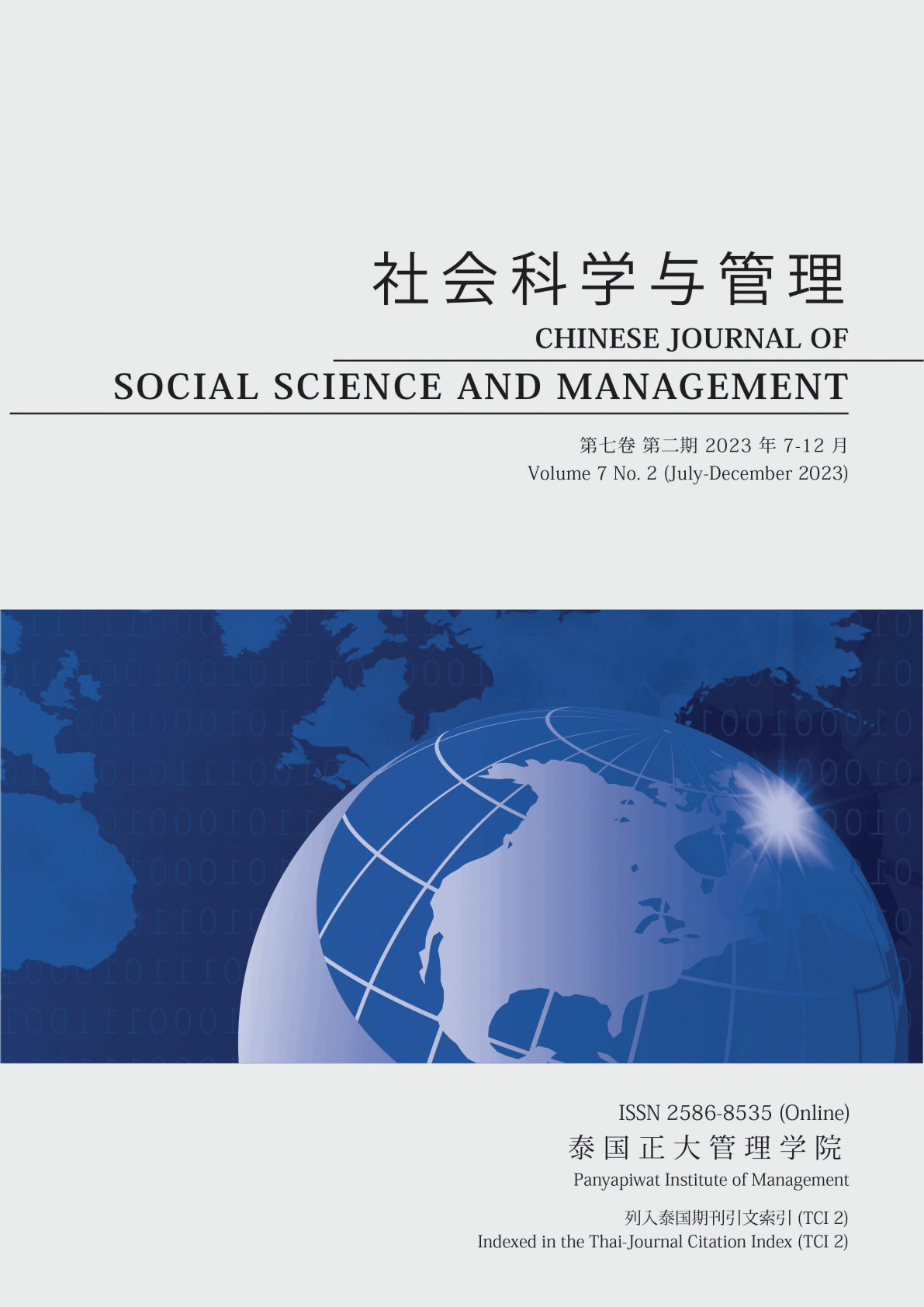THE CORRELATION BETWEEN CHINA’S FOREIGN EXCHANGE MARKET AND STOCK MARKET―AN EMPIRICAL ANALYSIS BASED ON VAR AND MS-VAR MODEL
Main Article Content
Abstract
The relationship between foreign exchange markets and stock markets is an important topic in macroeconomic research all over the world, especially in western academic circles. However, due to the late start of the marketization of the RMB exchange rate and the development of the stock market compared with western countries, there is still a relative lack of research on the relationship between them in Chinese academic circles. However, with the steady progress of China’s financial market reform and the increasing economic openness, the systematic and comprehensive study of the relationship between China’s foreign exchange market and stock market has become one of the most important topics for today’s researchers. By selecting the monthly data from July 2005 to December 2020 as the research sample, the exchange rate return rate and the stock index return rate were used to measure the foreign exchange market and the stock market, and the VAR model and MS-VAR model were used for empirical research. Subsequently, the following research conclusions were drawn: 1) The VAR model was used for analysis, and it was found that the fluctuation of the foreign exchange market affects the stock market, but the fluctuation of the stock market does not affect the foreign exchange market. 2) The MS-VAR model was used for analysis, and it was found that after identifying the different regional systems, when the economic environment is good, the stock market and the foreign exchange market have a strong correlation, but when the economy is continually depressed, the correlation between the two is weak. 3) From the perspective of the different regional systems, the conversion frequency among the various systems is low, but there is still the phenomenon of conversion between the different regional systems, especially during a state of economic downturn, when the conversion between different regional systems is more frequent.
Article Details

This work is licensed under a Creative Commons Attribution-NonCommercial-NoDerivatives 4.0 International License.
Chinese Journal of Social Science and Management Editorial Division
The Office of Research and Development, Panyapiwat Institute of Management
85/1 Moo 2, Chaengwattana Rd., Bang Talat, Pakkred, Nonthaburi 11120, Thailand
Tel. 02 855 01048 E-mail: cjssm@pim.ac.th
References
Ba, S. S., & Yan, M. (2009). Dynamic relationship between stock price and exchange rate an empirical analysis based on chinese market. Nankai Economic Research, (3), 48-64. [in Chinese]
Bornbusch, R., & Fischer, S. (1980). Exchange rates and the current account. American Economic Review, 70(5), 960-971.
Gavin, M. (1989). The stock market and exchange rates dynamics. Journal of International Money and Fiance, (2), 181-200.
Hau, G., & Rey, H. (2006). The relationship between exchange rates and stock prices: Studied in a multivariate model. Issues in Political Economy, (14), 1-25.
He, C. Y., Liu, L., Xu, X. Y., & Wang, Z. H. (2013). Foreign exchange market intervention, exchange rate changes and stock price fluctuations-Theoretical model and empirical research based on investor heterogeneity. Economic Research, (10), 29-42. [in Chinese]
Mouna, A., & Anis, J. (2016). Market, interest rate, and exchange rate risk effects on financial stock returns during the financial crisis: AGARCH_M approach. Cogent Economics and Finance, 4(1), 1125332.
Pan, M. S., Fok, C. W., & Liu, Y. A. (2007). Dynamic linkages between rates and stock prices: Evidence from East Asian markets. International Review of Economics and Finance, 16(4), 503-520.
Tao, S. G., & Fan, J. Y. (2018). QFII, dynamic relationship between RMB exchange rate and stock price - an empirical analysis based on TVP SV VAR model. Shanghai Economic Research, (2), 61-73. [in Chinese]
Yang, S. Y., & Doong, S. C. (2012). Price and volatility spillovers between stock prices and exchange rates: Empirical evidence from the G-7 countries. International Journal of Business and Economic, 3(2), 139-153.
Yau, H. Y., & Nieh, C. C. (2019). Testing for cointegration with threshold effect between stock prices and exchange rates in Japan and Taiwan. Japan and the World Economy, 21(5), 292-300.
Zhang, Y., & Sun, H. F. (2012). A new explanation for the risk difference between Chinese and American stock markets - caviar model and demonstration of the asymmetric effect of return on market risk. Nankai Economic Research, (5), 111-120. [in Chinese]
Zhao, J. W., & Zhang, J. S. (2013). RMB exchange rate, short-term international capital flows and stock prices - are test based on the data after the exchange rate reform. Financial Research, (1), 9-23. [in Chinese]
Zhu, X. L., & Li, P. (2011). Linkage effect between RMB exchange rate and stock price - from the perspective of spillover and dynamic correlation. Financial Theory and Practice, (5), 8-12. [in Chinese]


